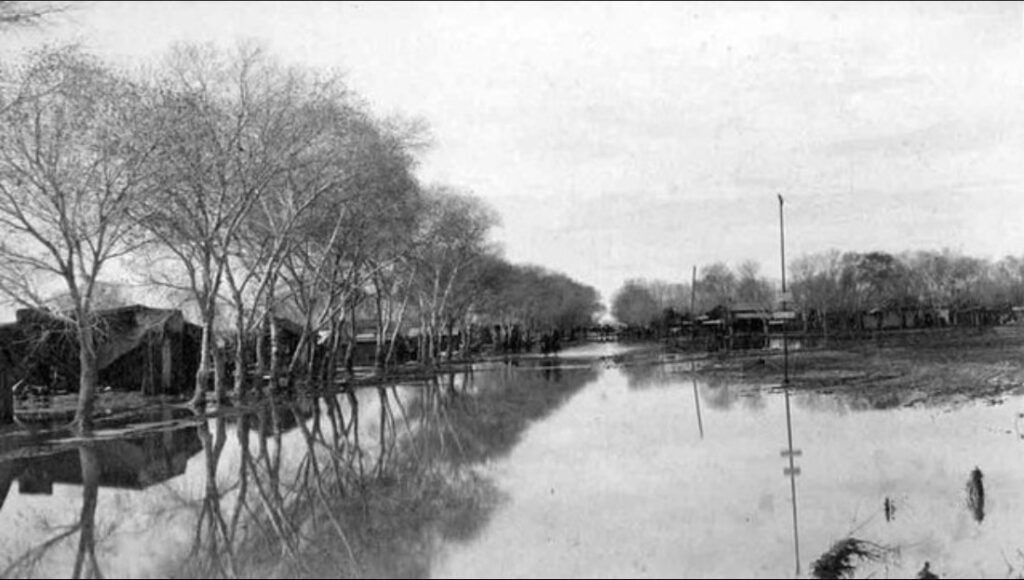Donna Reiner has written many articles over the years for the Arizona Republic and others about Phoenix history and memorials. She is a regular contributor to our newsletter. This month, Donna tells us about the history of droughts and floods before we began moderating water flow with dams and canals.
“Unless we have early summer rains and plenty we will experience the most drouth ever known here…. May the Lord have mercy on us.”
-J.A.R. Irvine, 1904
Irvine’s words were no exaggeration. At the time, the Salt River Valley was firmly in the grip of a nearly seven-year drought that had dried up the Salt River, severely crippled farming, and forced other residents to leave the area. The passing of the Newlands Reclamation Act of 1902 followed by the formation of the Salt River Valley Water Users Association in 1903 set the stage for the construction of Roosevelt Dam. While this would eventually provide a steady source of water for the valley, it was not completely filled until 1915. In the meantime, everyone prayed for rain. And eventually it did come. But Phoenicians needed to be careful of what they wished for. Too much rain was also a hazard.
As anyone who has experienced the valley monsoon knows, sudden and torrential downpours can create “rivers” as the rushing water fails to soak into our caliche soil. Presumably, today such water is either diverted into catch and flood basins, or spills into underpasses and streets. During a heavy storm, many of us still watch from our windows to see how quickly the streets back up “just in case” because too often the water goes where it wants and not necessarily where the experts expect. This might be Mother Nature’s gentle reminder to many Phoenicians of why they still have flood hazard insurance.
However, in 1891, without the protection of dams on the Salt River, the flooding was so extensive near the Salt River bed that the residents of the southern part of Phoenix (the Irvine, Montgomery, Collins, Murphy and Linville additions just south of Washington) were forced out. Many of their adobe structures “melted” as the water lapped at their walls.
Floodwaters even invaded the Territorial Capitol building on 17th Avenue and Washington several times after its construction in 1901. During 1905, the “rain gods” were overly generous: 19.73 inches of rain fell from the sky (over 2 ½ times our normal rainfall). Yikes!!
Fierce forest fires throughout the state this year could again impact the valley’s watershed increasing the chances of flooding and mudslides IF and when it rains. Climatologists know how much rain it will take to officially declare the end to this prolonged drought and this means here and in the mountains.
The official start of the monsoon season is June 15th. Are we prepared for the amount of rain which would spell the end of our drought?










